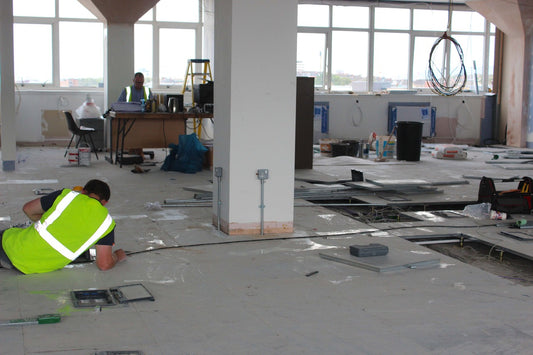Before asbestos was banned in the UK in 1999, many people worked in environments where asbestos exposure was incredibly high. It can take many years to find out that having breathed in the lethal asbestos fibres you are suffering from a disease related to them. Here are the top 5 occupations that were infamous for asbestos exposure and have led to many deaths in recent years.
Top 5 Occupations for High Risk Asbestos Exposure

Asbestos Manufacturer
Anyone who worked in factories that produced asbestos goods was at risk. Companies such as J. W. Roberts in Armley, Leeds manufactured insulation mattresses containing the hazardous minerals which were used in ship and train building. They also made linings for boilers. The factory closed in 1958 but it left behind a carcinogenic legacy not only for workers but also for many in the surrounding area. Armley is considered to be the deadliest area in Great Britain. Watch out for our blog post on the full history of asbestos manufacture in Armley later this month.
Shipbuilder
Another occupation those decades later killed many working in this trade. Those involved in the construction, renovation and repair of ships worked in environments that exposed them to huge levels of asbestos. Testament to this fact is that the areas in the UK where ships were built coincide with higher deaths caused by asbestos related diseases.
How many samples?
You will require 1 sample per surface / material tested. (To be used at 1 time at 1 property) Learn more.
Full Asbestos Testing Kit
How many samples?
You will require 1 sample per surface / material tested. (To be used at 1 time at 1 property) Learn more.
- Same Day Dispatch
- FREE Delivery
- Tested at UKAS Lab
- Official cert of results
- FREE 1st Class Return
- Full PPE Included
Train Builder
Because of its insulation properties asbestos was the material of choice for insulating pipes in trains and often as a fire inhibitor spray on the framework of them. Since the dangers of the lethal minerals were not known, train builders were not provided with health and safety equipment. Spraying without adequate respiratory equipment or suitable masks caused massive inhalation of asbestos fibres.
Construction worker
Whether a carpenter, electrician, plasterer or other tradesperson working in construction; most were exposed to asbestos in one way or another. Artex was a trendy and cheap plaster finish and it contained asbestos, as did insulation boards, rainwater goods and corrugated roofing. Many homeowners, even today, don’t appreciate that their properties are likely to have some asbestos if built before 2000.
Heating Engineer
We include plumbers with heating engineers since pipes had to be laid and tanks lagged. A mixture of water and asbestos powder was used by them to insulate pipes and lag tanks. During the mixing and application of the paste asbestos fibres became airborne. Many in this trade have paid with their lives.
Asbestos exposure
You might imagine that asbestos exposure is a thing of the past since the material is now banned. However, nothing could be further from the truth. Anyone whose job it is to repair or replace products that are over 17 years old takes a risk if the product is disturbed or damaged.
Before attempting any job like this, take samples of the material first. Asbestos testing kits are inexpensive and contain everything required to collect samples safely. Results come back within 24 to 48 hours. It just isn’t worth causing permanent damage to your health.





